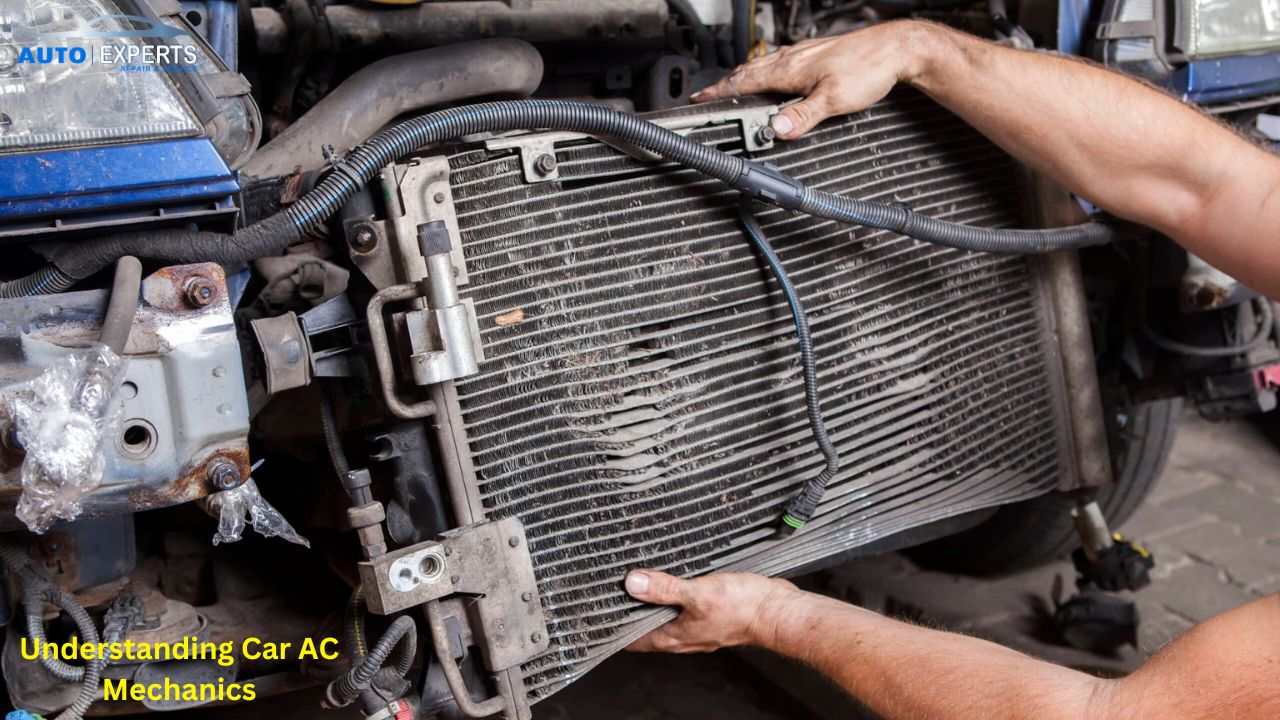
When summer arrives, your car’s air conditioning (AC) system becomes essential for comfortable driving. Understanding how car AC mechanics work not only helps you appreciate this luxury but also empowers you to maintain the system effectively. In this guide, we’ll break down the components, functioning, common issues, and maintenance tips to ensure your car’s AC keeps you cool all year round.
1. Components of a Car AC System
The car AC system consists of several key components that work together to cool the air inside your vehicle. Here’s a breakdown:
- Compressor: Often referred to as the heart of the AC system, the compressor compresses the refrigerant, increasing its temperature and pressure, and pushes it through the system.
- Condenser: The condenser is a heat exchanger that cools the high-pressure refrigerant gas by converting it into a liquid as it passes through.
- Receiver/Drier: This component removes moisture from the refrigerant, preventing ice formation and protecting the system from damage.
- Expansion Valve: This valve regulates the flow of the refrigerant into the evaporator, causing it to expand and cool rapidly.
- Evaporator: Located inside the cabin, the evaporator absorbs heat from the car’s interior air and uses the cold refrigerant to cool it before blowing it back into the cabin.
- Blower Fan: The blower fan pushes the cool air from the evaporator into the cabin, creating a comfortable environment.
2. How Car AC Mechanics Work
Understanding the mechanics behind car AC systems is essential for recognizing how the cooling process functions:
- Refrigerant Circulation: The refrigerant, a special fluid that can easily change states between gas and liquid, circulates through the AC system, absorbing and releasing heat.
- Compression and Condensation: The compressor pressurizes the refrigerant, raising its temperature. The hot, high-pressure gas then flows into the condenser, where it loses heat and condenses into a high-pressure liquid.
- Expansion and Evaporation: The high-pressure liquid refrigerant passes through the expansion valve, where it expands and cools down. The cold, low-pressure refrigerant then enters the evaporator.
- Heat Absorption: Inside the evaporator, the refrigerant absorbs heat from the cabin air, causing it to evaporate back into a gas. The blower fan pushes the cooled air into the cabin, while the refrigerant returns to the compressor to repeat the cycle.
3. Common Car AC Issues
Car AC systems can face several problems that affect their performance. Here are some common issues:
- Refrigerant Leaks: A common issue is refrigerant leaks, which can reduce cooling efficiency or stop the AC from working altogether. Leaks can occur due to worn-out seals, hoses, or components.
- Compressor Failure: The compressor can fail due to wear and tear, electrical issues, or refrigerant problems. A faulty compressor often leads to a complete AC system failure.
- Clogged Condenser: The condenser can get clogged with debris, reducing its ability to cool the refrigerant and affecting the system’s performance.
- Faulty Blower Motor: If the blower motor fails, the AC system will struggle to push cool air into the cabin, reducing the overall cooling effect.
- Electrical Problems: Faulty wiring, blown fuses, or malfunctioning sensors can disrupt the functioning of the AC system.
4. Maintenance Tips for a Healthy Car AC System
Regular maintenance is key to keeping your car’s AC system in top condition. Here are some tips:
- Check the Refrigerant Levels: Low refrigerant levels can hinder the cooling process. Ensure the refrigerant is topped up to the manufacturer’s recommended levels.
- Clean the Condenser: Keep the condenser free from dirt and debris to maintain its cooling efficiency. A clean condenser ensures optimal heat exchange.
- Run the AC Regularly: Running your AC system regularly, even in the winter, helps keep the compressor and seals lubricated, preventing wear and tear.
- Inspect Belts and Hoses: Regularly check the belts and hoses connected to the AC system for signs of wear, cracking, or leaks, and replace them as needed.
- Replace the Cabin Air Filter: A clogged air filter can reduce airflow, making your AC system work harder. Replace the filter according to your vehicle’s maintenance schedule.
5. When to Seek Professional Help
While basic maintenance can be handled at home, some AC issues require professional attention:
- Persistent Leaks: If you notice refrigerant leaks or if your AC isn’t cooling as it should, it’s time to consult a professional technician who can diagnose and repair the issue.
- Unusual Noises: Strange noises coming from the AC system, such as grinding or squealing, indicate a problem with the compressor or other components. A professional inspection is necessary to prevent further damage.
- Electrical Issues: If your AC system isn’t turning on or if you’re experiencing intermittent cooling, an electrical fault may be the cause. An experienced technician can trace and fix these issues.
Conclusion
Understanding car AC mechanics not only helps you appreciate the cooling comfort during hot days but also empowers you to take better care of your vehicle. By knowing how the car ac system works, identifying common issues, and performing regular maintenance, you can ensure your car’s AC remains efficient and reliable for years to come. Remember, when in doubt, always seek professional help to keep your car’s AC system in optimal condition.